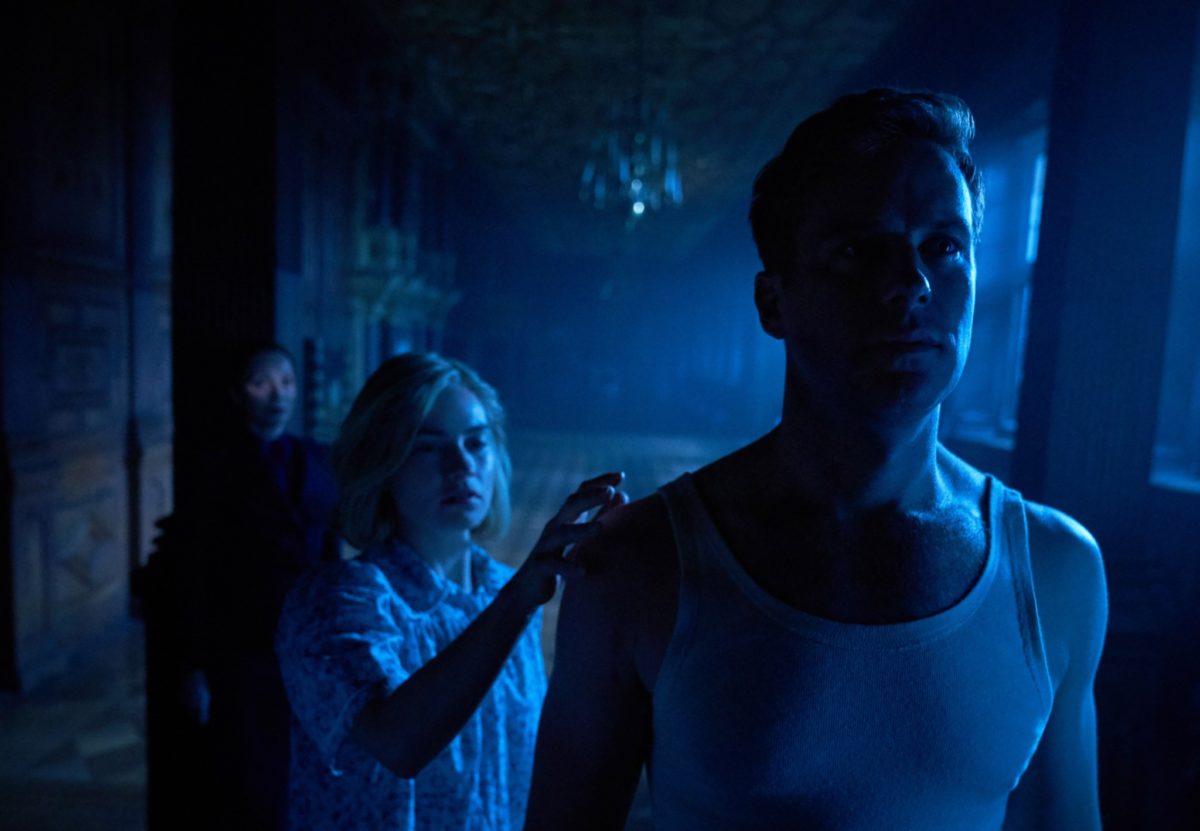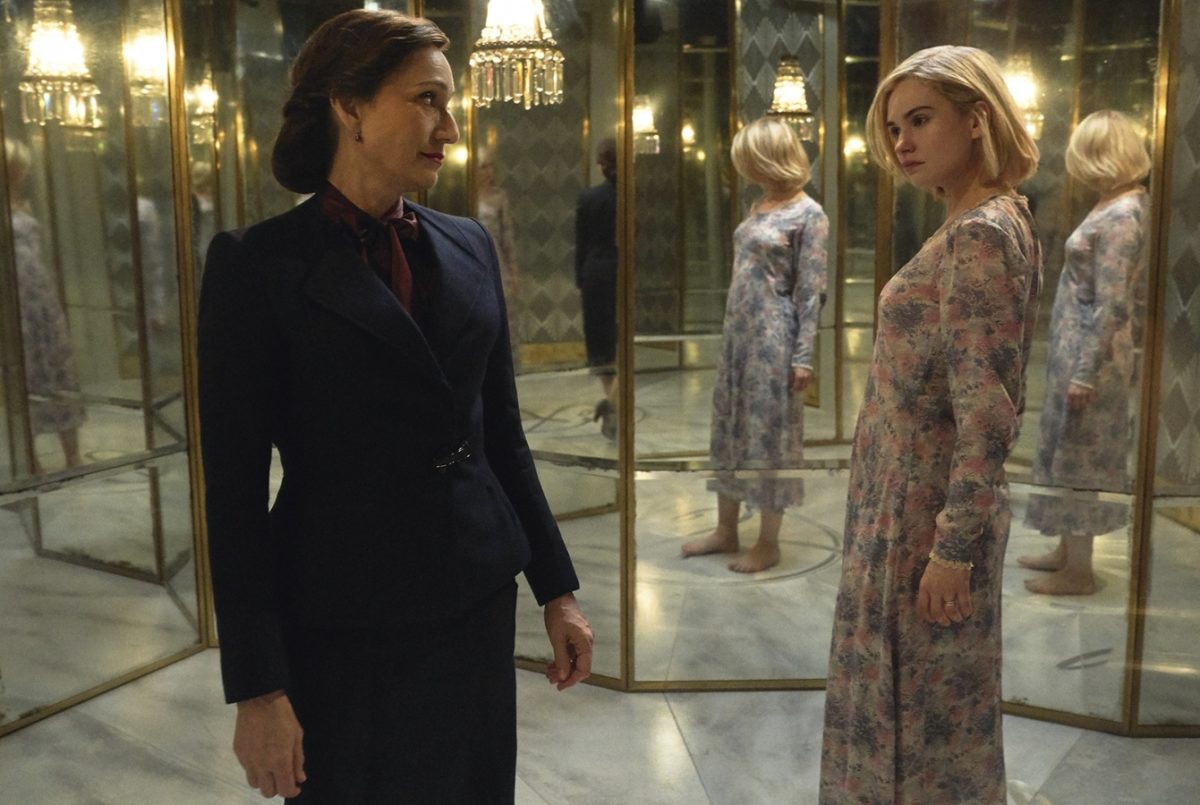Ben Wheatley’s Rebecca evokes the titular character in the spaces she left behind in Maxim de Winter’s family estate, Manderley, and in the people she left behind. She’s part victim and victimizer in this update to Daphne du Maurier’s Gothic novel. Draped in beautiful period accouterment, Wheatley’s take is less spooky than the Hitchcock original, owing much success to editor Jonathan Amos, who brings an ebullience to the adaptation.
As the film arrives on Netflix, we spoke with the director about creating the character of Rebecca in the negative space: in props and the feelings of characters marked by her life and death. We also discussed the time-travel elements of his montage editing style, what he drew from Alfred Hitchcock’s Rebecca, and a hypothetical Agatha Christie movie starring Kristin Scott Thomas and Ann Dowd.
The Film Stage: Everything Rebecca leaves behind is evocative of her character and style. Will you talk about creating Rebecca as omnipresent, though physically absent?
Ben Wheatley: We imagined that Maxim’s met her in London where she’s a sophisticate, and then moved her out to Cornwall. It’s a long way, and it’s even a long way now. The roads are really slow. You can get to New York quicker from London than you can to Cornwall. Obviously, she’s having a hard time with Maxim anyway, but she starts to redecorate the house and she brings with her the modernism of London. At that point would have been art deco. She starts to replace things in the house. The house itself, Manderley, is like a repository of memory and artifacts of the de Winter family. We imagined that the winter family were some colonial, scumbag, carpetbagging style characters who went all over the world and set up sugar plantations. They’ve robbed as much money as they could out of all these countries. They brought it all back to this house, and the house got bigger and bigger and bigger. And Maxim de Winter is the weakest link in that chain of DNA. So the house itself becomes like a battleground between Rebecca and Maxim, all off camera, obviously. She’s slowly growing her world; her bedroom, that corridor, and stuff is all starting to take over the house.
I think the actual things like the brushes and the objects, letters, and all these things that you find around the house are probably placed by Mrs. Danvers. These microaggressions that Danvers is doing to keep sticking the knife in a bit, telling the new Mrs. de Winter, this is not your house, or you’re replacing someone that is greatly loved. Apart from that stuff, a lot of it’s done in sound design. Rebecca’s musical theme constructs itself over the course of the movie, and becomes stronger and stronger as it goes on. In sound design, the elements of her death are in the house in everyday objects. So whenever anyone opens a drawer, the noise of the key is the noise of the gun being cocked, or the cylinders of the revolver being turned or, when she pulls a drawer out it’s more like a guillotine noise. There’s places in the house with the sound of boats and the sound of water. It’s like a haunting without a ghost. This is the psychological haunting of the house. You subtly experience these things. You may not register it, but it’s going into your ears. You do know it, but you just don’t know it. If you analyze it, you’ll be able to work it out over time, but it’s not important the audience say, “I know what that is. I know what that is.” But it’s subtly building up the evidence in your head as you watch it.

You have some montages that are intercut with scenes as they’re happening. It’s like time travel.
There’s various strategies in the film, like when the drama becomes too intense that it breaks the film a bit. Things could go into handheld or the temporal reality of the film can break. So you can jump ahead or jump backwards. That was to do with the idea that the film is not just the linear telling of a tale. It’s already bookend as a dream. It’s not a straight dream. but it’s a memory of a dream that’s being retold to you by the main character, which is to how the book works as well. I thought in the book, he does a similar thing where in the first two pages, they’re talking about Manderley and Mrs. Danvers and what happens at Manderley, and then they jump backwards and forwards to France and the story starts proper. So it’s not as straightforward as going from A to B to C and it’s all treated like a series of memories and layers of memories in the book. And that’s what we wanted to get across in the film. But at the same time, you don’t want to totally tip the audience off to it being a dream, because it loses all stakes. Because you go “Oh, it was a dream, none of this is real, I don’t believe it.” You need to feel like you’re edging into a proper linear telling. You have those stakes, but at the same time, there’s little suggestions all the time that time itself is not as certain as you think it is within the edit.
Will you talk about Mrs. Danvers’ presence hovering over the whole story and how she pulls the strings?
I think in the original adaptation and in the book she’s much more black and white. She’s a specter, like a shrill specter. In this, I felt a lot for Danvers, I felt that she’d been hard done by in many ways, and that she’s not really the villain of the film at all. She’s the moral center of it. She’s talking to the audience a lot and telling them to watch out for these people, what they’ve been doing is wrong and morally repugnant, and their actual love and success by the end of the movie is built on the body of a murdered woman. We’ve only actually got Maxim de Winter’s word for what happened. If you take it at face value of what he said, which is, “Oh, she almost begged me to kill her” and “she said she was pregnant and that made me kill her.” Even that is no justification for shooting an unarmed pregnant woman. Then later, he’s let off the hook by “Oh, yeah, she had cancer. So that’s okay, as well,” which is equally not okay and I think that Danvers is literally looking to the audience and saying, “Are you gonna let this happen? I can’t believe this is who you are as an audience member.” I like the idea that there’s almost like an alt-reality where Danvers is much more like an Agatha Christie character, or like Miss Marple, and she would investigate the murder and she’d bring them all to justice. In a normal film that was what would happen. Maxim would be set off in cuffs in the drawing room. But no, it doesn’t happen like that. The murderers get away. Danvers literally jumps in the sea, she’s so disgusted by everybody and said, I’m not having any more to do with this story. I’m out, which I thought was great.
If Kristin Scott Thomas’ Mrs. Danvers and Ann Dowd’s Mrs. Van Hopper had their own comedy/crime caper, I would love to watch it.
You’re not the first person that said that as well. [Laughs.] Because on the production, we were all like, wow, those two would be brilliant together. And the other one I came up with is Danvers and Jack Favell together. Her working in all these houses and him trying to raise money for his racing car.

Will you talk about casting Kristin and Ann what they bring to their roles?
Both of them bring an almost primal power to their roles. I think certainly with Kristin, that ability to find the emotion and bring it straight to the surface so quickly, like there’s stuff in it that goes beyond the performance thing and you just feel empathy to her as a person. You look at her and go, “Oh my god, she’s really upset. That’s horrible.” And it almost breaks through the whole movie. You instantly have sympathy for her in a way that maybe the other characters never get to that point, and I thought that was really amazing. With Ann, the power of her personality is so massive, she’s so dominating as a performer, it’s always just a joy to work with. Lily James’s character has got to be bullied and harassed and pushed around by Ann’s character for her to build up and to rise. Ann Down just smashed her in that first 20 minutes. You felt immediately that this is not a good place for Lily’s character to be, and she’s been genuinely abused. Ann’s just fantastic.
When watching the film, it’s clear this isn’t a remake of Hitchcock’s Rebecca, but did you watch his film and draw anything from it?
I watched it a lot and thought about it. I think one of the conclusions that I had was that we wanted to one, change the age gap between the two characters. Even though Armie is the same age as Laurence Olivier, which is really weird, because the weird thing about the Hitchcock version is that they’re all much younger in it than you think. Laurence Olivier is like 34 in Rebecca, the woman who plays Danvers is 32. So bizarre, and the difference in age between Olivier and Joan Fontaine is only like four years, but it’s bonkers. So the difference in age between Armie and Lily is only about two years. So what I figured is I could live the rest of my life without seeing another drama about an old man and young woman, I’d be happy. I figured that the difference in their status and in the privilege that he has, versus how little control she has over her life, and her own naivety were enough to make the story work in a way that I didn’t need to double down by making her like a child as well.
The other thing was the warming up of Maxim de Winter in the beginning. So that he didn’t hit the ground running as such an ass, like in the original. I really wanted the audience to invest in their relationship and like, and feel sad when it started to fall apart. As an audience member, the conversation with the screen, with the book and with the first adaptation, you just find it slightly incongruous that they’re staying together. And why is she doing it? Why does she not just leave? It’s a difference in culture in terms of both the 30s and now, and also the idea of the attractive obnoxious man is something that, thankfully, is slipping out of our lexicon and the idea that being rude to women is somehow attractive. It’s just a hard one to sell and I didn’t want to see it, so that was changed.
Rebecca is now on Netflix.
